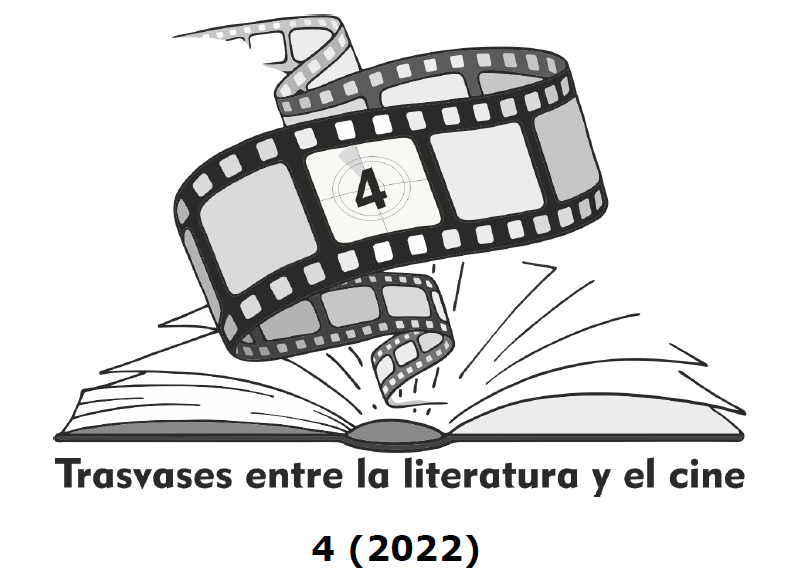In the footsteps of Saint Ignatius
The influence of fictional literature and the historiographical tradition on the film El capitán de Loyola (José Díaz Morales, 1949)
DOI:
https://doi.org/10.24310/Trasvasestlc.vi4.14098Keywords:
St. Ignatius of Loyola, Film biography, José Díaz Morales, José María Pemán, Religious cinema, Early FrancoismAbstract
The production of the film biography of Saint Ignatius, El capitán de Loyola, during the early years of Franco’s regime, took place in a propitious environment for its realisation, with up to four possible film projects coinciding in less than ten years. Although the film does not explicitly adapt a previous work of fiction, it is possible to trace the sources that inspired its plot. These sources, some fictional, others academic, all embedded in popular imagery, allow us to trace a coherent line from the death of the saint in the 16th century to the date of the film’s release. Thus, we propose to analyse its plot from the historical and narrative aspects.
Downloads
Metrics
Publication Facts
Reviewer profiles N/A
Author statements
Indexed in
-
—
- Academic society
- N/A
- Publisher
- Universidad de Málaga
References
Amorós, Andrés (1993), «José María Pemán», en R. Gullón (ed.), Diccionario de literatura española e hispanoamericana, Madrid, Alianza Editorial.
Benítez de Aldama, Enrique (1941), La leyenda negra antijesuita. Cuatro siglos bajo la calumnia. En el cuarto centenario de la Compañía de Jesús, Buenos Aires, Editorial Difusión.
Brenes, Carmen Sofía (2016), «Explorando el tema. La noción poética de “sentido” al servicio de la escritura de guion», Revista de Comunicación, 15, págs. 166-182. [En línea: https://revistadecomunicacion.com/article/view/1246/1069 Fecha de consulta: 14/01/2022]
Campillo, Antonio (2011), «Del gobierno del alma al gobierno del mundo. El nacimiento de la Compañía de Jesús», Eikasia. Revista de Filosofía, 37, págs. 31-57. [En línea: https://moam.info/del-gobierno-del-alma-al-gobierno-del-mundo-el-eikasia_59caf33c1723dd086c1d649f.html Fecha de consulta: 14/01/2022]
Cué, Ramón (1941), El capitán de Loyola (Estampas), Santander, Universidad Pontificia de Comillas.
De Loyola, Ignacio (1983), El peregrino. Autobiografía de San Ignacio de Loyola, ed. de J. Mª Rambla, Bilbao, Ediciones Mensajero.
De Loyola, Ignacio (1992), Autobiografía y diario espiritual, ed. de L. Mª Mendizábal, Madrid, Biblioteca de Autores Cristianos.
De Loyola, Ignacio (2011), Ejercicios espirituales, Barcelona, Editorial Linkgua [En línea: https://elibro.net/es/ereader/unav/61566 Fecha de consulta: 14/01/2022]
De Loyola, Ignacio (2019), Autobiografía, Red Ediciones. [En línea: https://elibro.net/es/ereader/unav/170417 Fecha de consulta: 14/01/2022]
De Ribadeneyra, Pedro (1967), Vida de Ignacio de Loyola, Madrid, Espasa Calpe.
Eguaras Iriarte, José María (2019), Ángel Herrera Oria. Una biografía testimonial, Madrid: CEU Ediciones.
Fumagalli, Armando (2019), «Tra realtà e racconto: La messa in forma di una vita nel cinema hollywoodiano e nella fiction italiana», Comunicazione Sociali, 2, págs. 303–317
Mata Induráin, Carlos (2006), «San Ignacio de Loyola, entre historia y literatura (I). El Siglo de Oro», Anuario del Instituto Ignacio de Loyola, 13, págs. 145-176. [En línea: https://www.academia.edu/1472681/San_Ignacio_de_Loyola_entre_historia_y_literatura_I_El_Siglo_de_Oro Fecha de consulta: 14/01/2022]
Pemán, José María (2005), El divino impaciente, Bilbao, Ediciones Mensajero.
Pérez Núñez, Jesús (2018), Los rastros del Imperio: el ideario del Re?gimen en las películas de ficción del primer franquismo (1939-1951), Bilbao, Libros del Jata.
Racionero de la Calle, Francisco (2004), «Dos hombres (Carranque y Sobrevila) y un destino: “Al Hollywood madrileño” (o buscando antecedentes fílmicos en la tierra de uno) (I)», Formas de arquitectura y arte, 6, págs. 63-65.
Ravier, André (1991), Ignacio de Loyola, Madrid, Espasa.
Riambau, Esteve y Torreiro (1998), Casimiro, Guionistas en el cine español: quimeras, picarescas y pluriempleo, Madrid, Cátedra.
Rodríguez Olaizola, José María (2009), Ignacio de Loyola, nunca solo, Madrid, San Pablo.
Tellechea Idígoras, José Ignacio (2006), Ignacio de Loyola, solo y a pie, Salamanca, Ediciones Sígueme.
Downloads
Published
How to Cite
Issue
Section
License
All authors published in this journal accept the following copyright terms:
a. Authors retain their authors´ rights (copyright) and grant First Publication Rights to the journal, which whill be published under a the Creative Commons Attribution-NonCommercial-ShareAlike 4.0 International (CC BY-NC-SA 4.0) license. All about this license is available in the following link: <http://creativecommons.org/licenses/by-nc-sa/4.0>
b. Authors may separately establish additional agreements for the non-exclusive distribution of the version of the work published in the journal (e.g. including it in an institutional repository, or publishing it in a book) with an acknowledgement of its initial publication in this journal.
c. Authors are allowed and encouraged to disseminate their work electronically (e.g. in institutional repositories or on their own website) as this can lead to productive exchanges, as well as earlier and more extensive citation of published work.
The author is responsible for obtaining permission from the copyright holder when using copyrighted materials.
This electronic journal is published by University of Málaga (UmaEditorial), thus it is necessary to cite the origin of any partial or total reproduction.








22.png)










